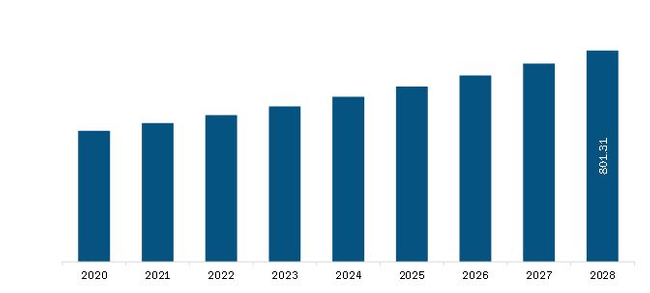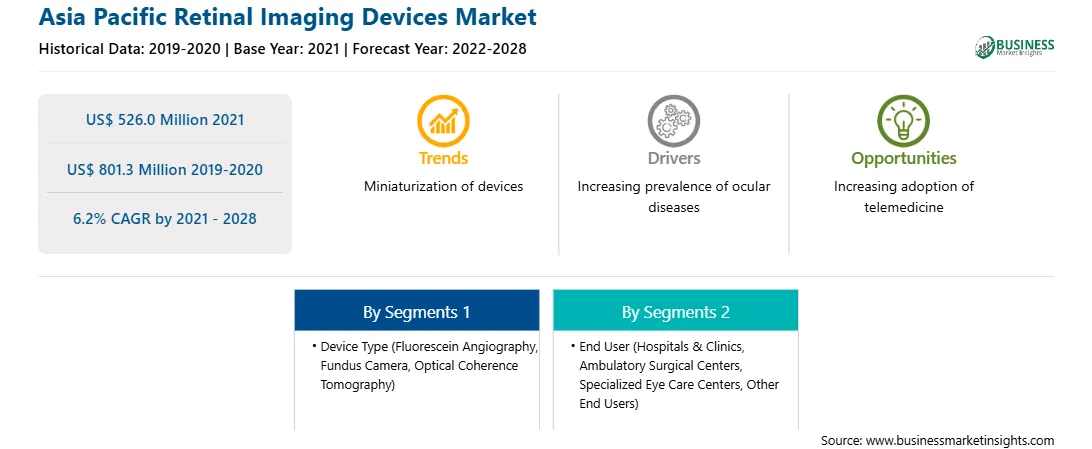Optical coherence tomography (OCT) is the fastest-growing sector in ophthalmology and medical imaging technology. Despite its use in ophthalmology, OCT is in the stages of acceptance and approval for coronary care and skin cancer care. The benefits of OCT devices have created opportunities to expand its applications in other fields of medical sectors. In addition, there are better opportunities to profoundly reduce the cost of OCT to address the undiagnosed people with their eye diseases. Also, the high cost of these devices is creating a barrier and resulting in limited access to eye care facilities.
Much research has been conducted to reduce the cost of OCT devices, which are successfully used in clinical studies. However, the cost of the devices remains the major restraining factor in the emerging regions. Therefore, the segment has vast opportunities to grow in emerging APAC economies. The rising expenditure on healthcare is likely to widen the opportunities for OCT in this region. Technological advancements are driving more research and developments across the medical device industries, which is expected to support the growth of the retinal imaging device market in the coming future.
The outbreak has severely affected the medical tourism industry in Asia pacific and imposed supply chain disruptions. Moreover, low-income countries face additional challenges due to the shortage of healthcare infrastructure, restrictions imposed by hospitals on suppliers, and decreased demand for retinal imaging and surgical instruments. There are various research studies on the reduction surgeries in APAC countries. Restrictive measures have been put forth in South Korea, Malaysia, Singapore, the Philippines, and India to prevent disease transmission. These restrictive measures are anticipated to impact the supply chain and the availability of medical devices in these countries over the next few years. It has affected disposable incomes and has also resulted in unemployment.
Furthermore, business strategies, such as mergers, acquisitions, and partnerships, have been adversely affected by complete lockdown. However, increasing vaccination across the region and the availability of government reimbursement policies for various retinal or eye surgical procedures is expected to normalize the situation in this region in the coming years and gradually increase the demand for retinal imaging devices.
With the new features and technologies, vendors can attract new customers and expand their footprints in emerging markets. This factor is likely to drive the APAC retinal imaging devices market at a promising CAGR during the forecast period.

Strategic insights for the Asia Pacific Retinal Imaging Devices provides data-driven analysis of the industry landscape, including current trends, key players, and regional nuances. These insights offer actionable recommendations, enabling readers to differentiate themselves from competitors by identifying untapped segments or developing unique value propositions. Leveraging data analytics, these insights help industry players anticipate the market shifts, whether investors, manufacturers, or other stakeholders. A future-oriented perspective is essential, helping stakeholders anticipate market shifts and position themselves for long-term success in this dynamic region. Ultimately, effective strategic insights empower readers to make informed decisions that drive profitability and achieve their business objectives within the market.

| Report Attribute | Details |
|---|---|
| Market size in 2021 | US$ 526.0 Million |
| Market Size by 2028 | US$ 801.3 Million |
| CAGR (2021 - 2028) | 6.2% |
| Historical Data | 2019-2020 |
| Forecast period | 2022-2028 |
| Segments Covered |
By Device Type
|
| Regions and Countries Covered | Asia-Pacific
|
| Market leaders and key company profiles |
|
The geographic scope of the Asia Pacific Retinal Imaging Devices refers to the specific areas in which a business operates and competes. Understanding local distinctions, such as diverse consumer preferences (e.g., demand for specific plug types or battery backup durations), varying economic conditions, and regulatory environments, is crucial for tailoring strategies to specific markets. Businesses can expand their reach by identifying underserved areas or adapting their offerings to meet local demands. A clear market focus allows for more effective resource allocation, targeted marketing campaigns, and better positioning against local competitors, ultimately driving growth in those targeted areas.

The Asia Pacific Retinal Imaging Devices Market is valued at US$ 526.0 Million in 2021, it is projected to reach US$ 801.3 Million by 2028.
As per our report Asia Pacific Retinal Imaging Devices Market, the market size is valued at US$ 526.0 Million in 2021, projecting it to reach US$ 801.3 Million by 2028. This translates to a CAGR of approximately 6.2% during the forecast period.
The Asia Pacific Retinal Imaging Devices Market report typically cover these key segments-
The historic period, base year, and forecast period can vary slightly depending on the specific market research report. However, for the Asia Pacific Retinal Imaging Devices Market report:
The Asia Pacific Retinal Imaging Devices Market is populated by several key players, each contributing to its growth and innovation. Some of the major players include:
The Asia Pacific Retinal Imaging Devices Market report is valuable for diverse stakeholders, including:
Essentially, anyone involved in or considering involvement in the Asia Pacific Retinal Imaging Devices Market value chain can benefit from the information contained in a comprehensive market report.